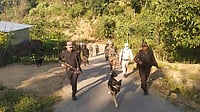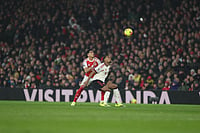HAJI Mastan—a mere dockyard coolie in 1940 turned petty dock thief turned big-time smuggler—was the first of the real dons. His undisputed reign lasted for 20 years—from 1955 to 1975. Today's gangsters are the legacy of this one man. Dawood Ibrahim, then his trusted lieutenant, became his chosen successor. Haji Mastan, who ruled over the dock areas and Crawford Market, was on good terms with the other two major underworld names of his day—Karim Lala and Varadarajan Mudaliar.
Karim Lala, who ran gambling and liquor dens in the Dongriarea, worked in tandem with Mastan—but ran his empire independently. He was greatly respected, mainly because he was the most seniormost of the dons. The empire of Varada-rajan Mudaliar—a Robinhood-like figure—extended across the Tamil-dominated pockets of Matunga-Sion-Koliwada. His distilleries were the main source of illicit liquor in Bombay. He also ran gambling dens in Dharavi and, like Karim Lala, assisted Mastan frequently.
Inter-gang rivalry was unheard of because territorial integrity was upheld by the dons. To be sure, there were occasional altercations, but no large-scale war.
Things changed in 1980 when Yusuf Patel, a merchant who supplied silver ingots to Mastan to pay for the gold that was being smuggled into the country, played dirty. The silver ingots were rejected abroad because of their lead content, and Patel refused to compensate Mastan for it. Mastan's henchmen attacked Patel during the month of Ramzan in Central Bombay. Patel survived but his bodyguard was killed.
When Mastan decided to quit, he appointed Dawood—the son of a police constable—as his successor. Dawood took over at a time of rapid changes. Real estate was booming and the underworld, which had the necessary resources—both money and muscle—tied up with builders or financed them and generally took care of stubborn tenants and business rivals vying for coveted bits of property. Some builders, who craved for a piece of the underworld action, ended up with small plots in the neighbourhood graveyard.
There were other changes too. Gold smuggling gave way to drug deals. Instead of silver ingots, dollars and pounds became the mode of payment. Those disgruntled were paid in lead. Swords, knives, and the all-time favourite 'tamacha'—the desi revolver manufactured in Rampur—were being phased out by easily accessible AK-56s and AK-47s. By 1985-86, Dawood became the most powerful man in Bombay's underworld. He soon broke away from his mentor, Mastan, and carved out his own kingdom.
Haji Mastan passed away last year. Karim Lala and Varadarajan are no more. The only thing that remains unchanged is the breeding ground of the underworld—Central Bombay, whose narrow bylanes are the transit route for huge amounts of money, is still the hub of criminal activity.


























